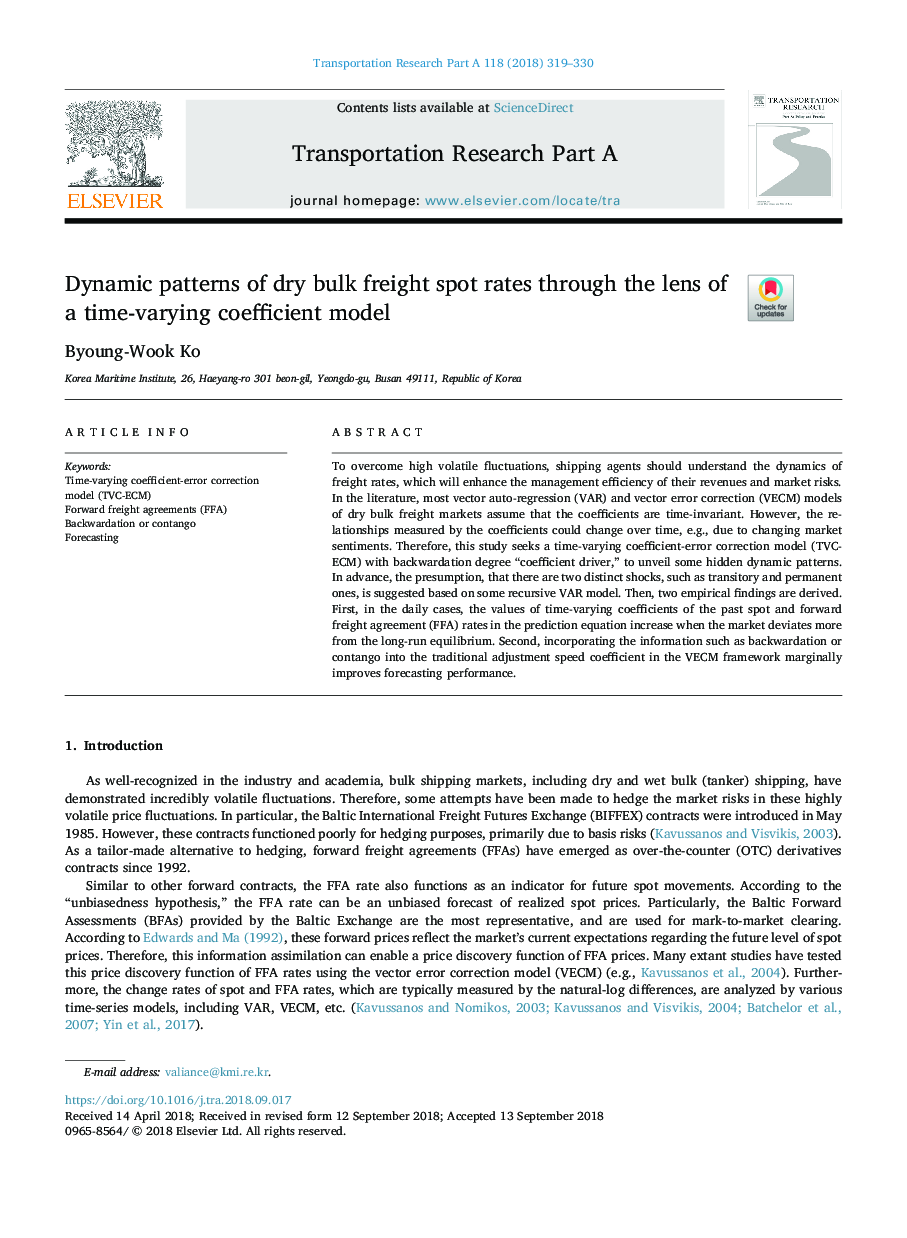| Article ID | Journal | Published Year | Pages | File Type |
|---|---|---|---|---|
| 10145893 | Transportation Research Part A: Policy and Practice | 2018 | 12 Pages |
Abstract
To overcome high volatile fluctuations, shipping agents should understand the dynamics of freight rates, which will enhance the management efficiency of their revenues and market risks. In the literature, most vector auto-regression (VAR) and vector error correction (VECM) models of dry bulk freight markets assume that the coefficients are time-invariant. However, the relationships measured by the coefficients could change over time, e.g., due to changing market sentiments. Therefore, this study seeks a time-varying coefficient-error correction model (TVC-ECM) with backwardation degree “coefficient driver,” to unveil some hidden dynamic patterns. In advance, the presumption, that there are two distinct shocks, such as transitory and permanent ones, is suggested based on some recursive VAR model. Then, two empirical findings are derived. First, in the daily cases, the values of time-varying coefficients of the past spot and forward freight agreement (FFA) rates in the prediction equation increase when the market deviates more from the long-run equilibrium. Second, incorporating the information such as backwardation or contango into the traditional adjustment speed coefficient in the VECM framework marginally improves forecasting performance.
Keywords
Related Topics
Physical Sciences and Engineering
Engineering
Civil and Structural Engineering
Authors
Byoung-Wook Ko,
